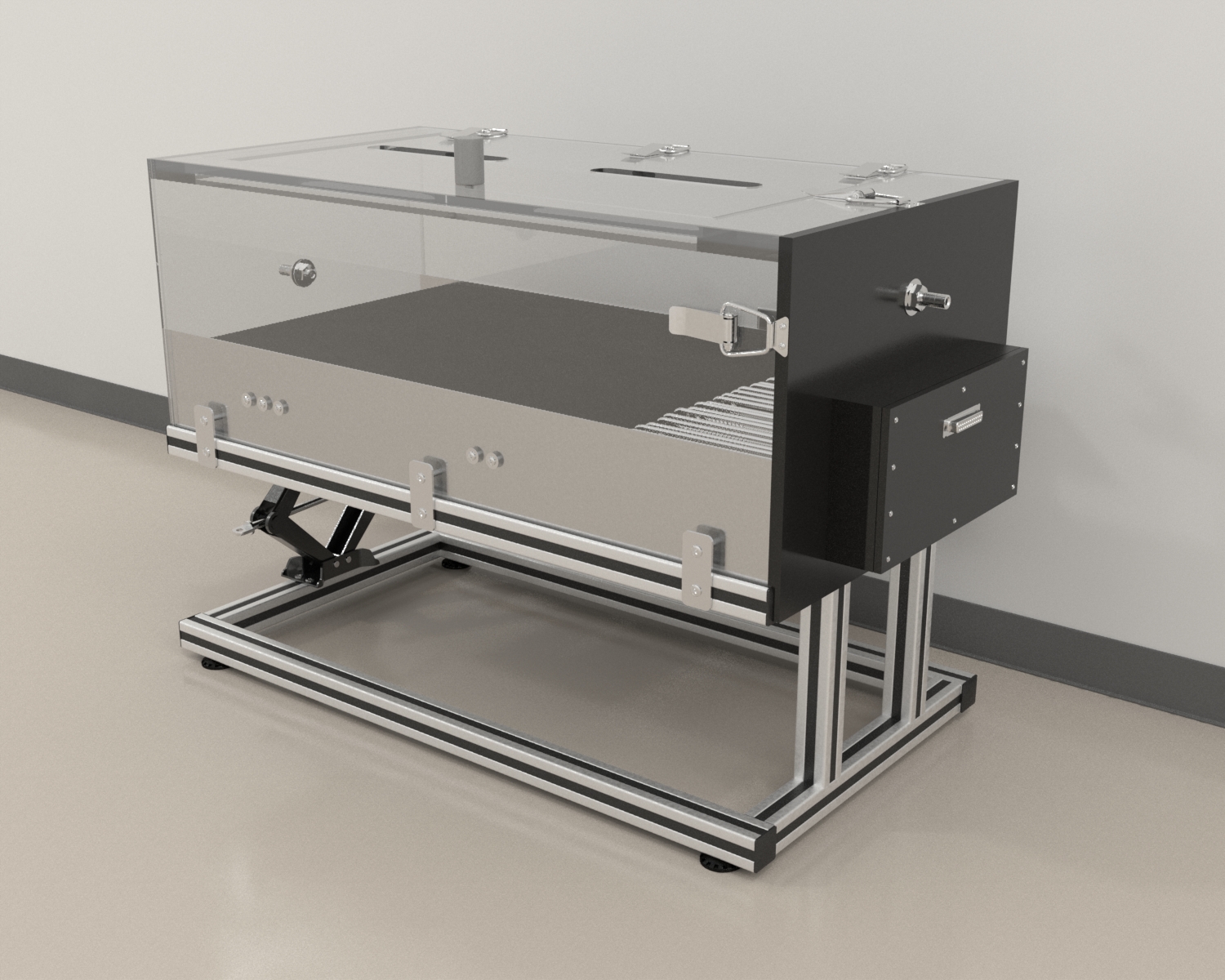To reference this article
Maximum Volume of Oxygen (VO2), Maze Engineers (2023).
Maximum volume of oxygen (VO2max) is a measure of the maximum amount of oxygen that an individual can consume during exercise. VO2max is expressed in milliliters of oxygen per kilogram of body weight per minute (ml/kg/min) and represents the maximum capacity of the body to transport and use oxygen during exercise. A high VO2max is a sign of good cardiovascular fitness and endurance, while a low VO2max is an indicator of poor fitness.
In scientific research, VO2M max is used in animal models such as rodents to assess cardiovascular health in disease models such as obesity, heart disease, and aging as well as drug development.
How is VO2 Max Measured?
VO2 max, or maximal oxygen uptake, is a measure of the maximum amount of oxygen that an organism can consume and utilize during intense physical activity. In rodent models, VO2 max is often used as an indicator of cardiovascular fitness and endurance capacity. The test involves measuring the oxygen consumption of the rodent while it is running on a treadmill, typically at increasing intensities until the maximum rate of oxygen uptake is reached. The resulting VO2 max value provides information on the rodent’s capacity to utilize oxygen during exercise, which can be useful for studying the effects of physical training or disease on the cardiovascular system. Additionally, VO2 max measurements in rodent models can be useful for evaluating the efficacy of new drugs or therapies that aim to improve cardiovascular function.
What is the Protocol to Measure VO2 Max in Rodents
To measure the maximum volume of oxygen (VO2max) using a metabolic treadmill, the following steps can be followed:
- Acclimate the rodent to the treadmill: Before starting the VO2max test, it is important to allow the rodent to become familiar with the treadmill and running on it. This can be done by gradually increasing the speed and duration of the running sessions over several days.
- Measure baseline oxygen consumption: Before starting the actual VO2max test, it is important to measure the baseline oxygen consumption of the rodent at rest. This can be done by placing the rodent on the treadmill and allowing it to run at a slow speed for several minutes while the metabolic cart measures its oxygen consumption and carbon dioxide production.
- Start the VO2max test: The VO2max test is usually performed by gradually increasing the speed and/or incline of the treadmill until the rodent reaches exhaustion, at which point it can no longer continue to run. During the test, the metabolic cart continuously measures the rodent’s oxygen consumption and carbon dioxide production.
- Record the data: The metabolic cart should continuously record the oxygen consumption and carbon dioxide production of the rodent during the test. It is important to note the highest value of oxygen consumption that the rodent was able to achieve, which represents its VO2max.
- Calculate VO2max: The VO2max can be calculated from the recorded data by dividing the highest oxygen consumption value by the body weight of the rodent. The result is typically expressed in milliliters of oxygen per kilogram of body weight per minute (ml/kg/min).
It is important to note that the specifics of the experimental setup, including the protocol for increasing the speed and/or incline of the treadmill, may vary depending on the species and size of the rodent, as well as the specifics of the experimental design.
Apparatus to Measure VO2 Max in Rodents
VO2 Max in Rodent Research
There have been a number of academic studies that have investigated maximum volume of oxygen (VO2max) in rodents. These studies have covered a wide range of topics, including:
- The validity and reliability of VO2max testing in rodents and how it compares to other measures of aerobic endurance capacity [1].
- The effects of different training protocols on VO2max in rodents, including the effects of high-intensity interval training and endurance training[2,3].
- The role of genetic factors in determining VO2max and endurance capacity in rodents [4].
- The effects of disease and other interventions on VO2max in rodents, such as the impact of obesity, heart disease, or aging [5,6].
- The use of VO2max testing to investigate the mechanisms underlying endurance capacity, such as the role of muscle oxygen utilization, substrate utilization, and muscle fatigue.
References
1. Boulay, M. R., & Gayda, M. (2015). Validity and reliability of the peak oxygen uptake measurement in rodents. Journal of Visualized Experiments, (99), e52191
2. Dorn, C., Boning, D., & Bloch, W. (2000). Endurance training increases VO2 max in rats. Medicine & Science in Sports & Exercise, 32(5), S234-S234.
3. Mikus, CR., Holloway, GP., Wisloff, U., & Ellingsen, Ø. (2002). Endurance training in rats increases oxidative capacity, reduces inflammation and improves function of the endothelium. Journal of Physiology, 544(1), 291-298.
4. van der Meer, R., & Westerterp, K. R. (2007). Influence of endurance training on aerobic capacity and muscle fiber type distribution in rats. European Journal of Applied Physiology, 100(4), 391-398.
5. Medeiros, A., Torsoni, M. A., & Carpinelli, A. R. (2009). Aerobic exercise training increases mitochondrial biogenesis in the heart and soleus muscle of rats. American Journal of Physiology-Heart and Circulatory Physiology, 296(4), H871-H879.
6. Smith, C. K., Balog, J. M., & Martin, D. S. (2011). Influence of a high fat diet on VO2 max and running endurance in rats. International Journal of Exercise Science, 4(3), 138-145


